There are numerous kinds of paper, each of which is utilized for food packaging for its own set of specific reasons. For example, the ability of some papers to withstand heat is significantly greater than their ability to withstand wetness.
In addition, the thickness, as well as the texture of the various papers used in the packing, can have an impact on the overall appearance as well as the feel of the product. In most cases, the particular packaging requirements of the food item are what decide the kind of paper that is used to package the food. You can tell your paper food container supplier what you need and get your custom solution.
1. Kraft Paper Food Packaging
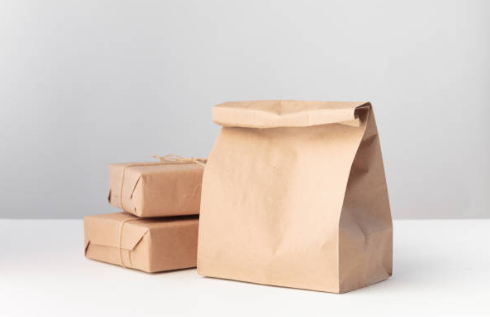
It is a form of paperboard that is manufactured using the chemically treated wood pulp in order to render it more durable and tenacious. Because it can withstand moisture and can be easily printed on, it is frequently utilized in the food packaging industry.
In order to remove the cellulose from wood chips, first they are burned with chemicals and then soaked in water. After the cellulose has been bleached and dried, the next step in the process is to make a paperboard. In order to make Kraft paper water-resistant, wax or polymer that is safe for human consumption is typically added.
In the food industry, kraft paperboard can be found in the packaging of a wide range of items, including dry foods, cereals, snacks, and confections. Additionally, it can be utilized as a wrapping material for meat, fish, and poultry. In addition, the liner of pizza boxes is often made of Kraft paperboard, which is used extensively.
Benefits for Food Packaging
Because it is strong and durable, it is an excellent choice as a material for the packaging of food. Because of this, it is an excellent method for preserving the safety of food while it is being transported. Additionally, because it prevents moisture from getting into the packaging, kraft paper can help keep food fresh for longer.
The fact that kraft paper can be recycled into new paper is yet another benefit of choosing this type of paper. As a consequence of this, it is a more environmentally friendly alternative to other packaging materials, such as plastic. Reusing Kraft paper is one of the best ways to reduce the material’s overall impact on the environment.
When it comes to the packaging of food, employing kraft paper has a number of benefits that should not be overlooked. For more details, visit Why Should You Choose Kraft Paper for Food Packaging?
Applications
Wrapping many different types of food in Kraft paper is a common practice. Among them are things like tissue paper, wax paper, boxes of pasta, boxes of cereal, and boxes of cracker food. In addition, sandwich bags and chip bags are both examples of food packaging that make use of Kraft paper.
Paper Bags with Round Handle
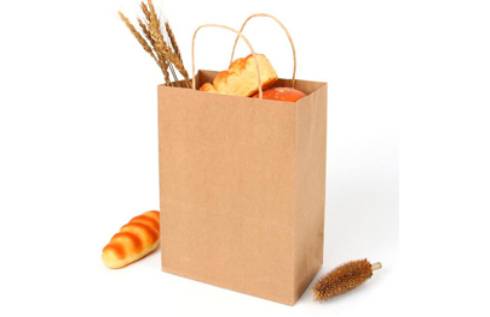
Paper bags with logos are perfect for packaging expensive things or giving as client presents. Top 5 Paper Bag Manufacturers: A Comprehensive Guide offers a variety of sizes and styles.Paper bags imprinted with their company’s name and brand are crucial for retail sales and lunch preparation for children. Customized paper bags for their restaurant. We offer a large supply of plain paper bags in various sizes, shapes, and colors.
FEATURES
- Four-color printing on white or brown Kraft paper
- Various paper weights, bag sizes, and aesthetics
- Eco-friendly, long-lasting materials
- The minimum order quantity is 2,000 pieces.
2. Wrapping Tissue Paper
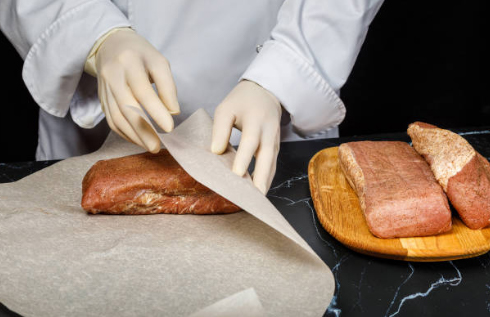
It is normal practice to use tissue paper when wrapping presents or other fragile items. Paper that is either intricately decorated or brightly colored and extremely thin is typically used in its construction. Wrapping tissue paper is sold both in sheets and in rolls, and it can be purchased either in packets containing multiple sheets or individually.
In order to provide additional cushioning and defense for the contents of the gift as well as the outer layer of the wrapping paper, it is common practice to insert tissue paper in this space. They can prevent the contents of a box or cargo from shifting during delivery by using tissue paper to fill any empty spaces that may exist within the container.
In addition to being used for gift wrapping, wrapping tissue paper is also commonly used to wrap clothing, glassware, and sensitive electronic components.
Benefits for Food Packaging
Tissue paper is a type of paper that is very lightweight and very thin. It also comes in a variety of colors. Wrapping greasy food is its most common application, although it can also be used for food packaging.
When it comes to the packaging of food, employing tissue paper offers a number of benefits. To begin, it prevents the food from being exposed to oxygen and moisture. Because of this, the food’s shelf life may be increased as a result.
Additionally, tissue paper can help prevent freezer burn when used properly. It is also excellent for lining bags or boxes, which helps to keep the contents clean and clear of dirt and debris that may have been inside the bag or box.
When selecting a product that will be used for food packaging, it is essential to select tissue paper that was made from components that are suitable for consumption. The utilization of tissue paper in this manner will prevent the food from becoming tainted.
Applications
Wrapping many different kinds of food products with tissue paper, each of which offers its own unique set of benefits, is a common practice in the packaging industry.
One of the items that is commonly served in a tissue paper-wrapped presentation is sushi. Rice, seafood, and vegetables are typically encased in nori (a type of seaweed) and served as part of the traditional Japanese dish known as sushi. The sushi does not lose its form and does not dissolve because it is wrapped in tissue paper.
The cake is yet another delicacy that is traditionally presented on tissue paper. The cake is a delicious dessert that is made by combining ingredients like flour, sugar, eggs, and butter. Cakes are typically encased in tissue paper so they retain their moisture and do not become dry over time.
Another type of meal that typically comes wrapped in tissue paper is pastry.
Larcenciel Tissue Paper
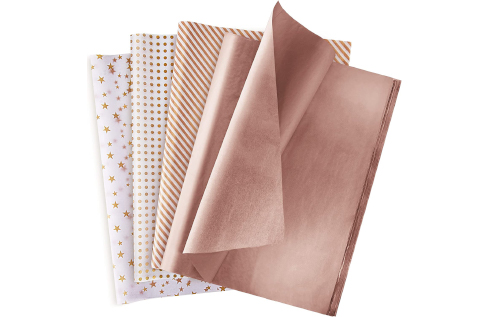
A Larcenciel Tissue Paper is a one-of-a-kind, environmentally friendly product with several advantages. Because of the use of plant fibers, this pattern is both durable and absorbent. Furthermore, the tissue paper is free of potentially harmful components such as scents and chemicals.
Larcenciel Tissue Paper is biodegradable and will not pollute the environment or clog the toilet. This chemical is safe for both people and animals to use. In addition to being hypoallergenic, tissue paper is the best choice for people with sensitive skin.
Because of its numerous advantages, the Larcenciel Tissue Paper is a fantastic choice for individuals looking for an environmentally responsible solution.
This product has a long shelf life, is absorbent, and does not include any scents or additives. Furthermore, the tissue paper is hypoallergenic and biodegradable.
3. Greaseproof Paper for Food Packaging
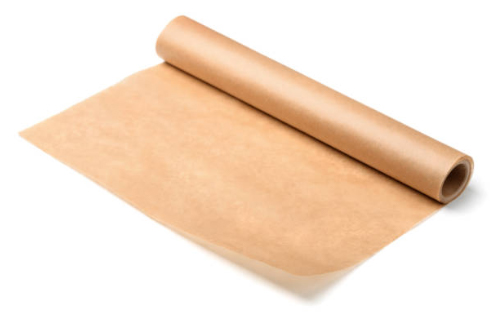
Paper that has been treated to be resistant to grease and oil is known as greaseproof paper. It finds employment in a wide variety of contexts, such as the lining of baking pans and the packaging of food products. In addition, the greaseproof paper has a number of applications in the manufacturing industry, including the production of electrical insulation.
The vast majority of grease-resistant sheets are made of cellulose, which is a substance derived from plants. In order to make a sheet of paper, cellulose is first mixed with a trace amount of clay, and then the mixture is covered in a layer of synthetic glue. When oils or fats come in contact with the resin, they are separated from the paper and become a separate product. As a direct consequence of this, the paper is resistant to both water and grease.
In comparison to other kinds of paper, the greaseproof paper offers a number of benefits.
Benefits for Food Packaging
The surface of greaseproof paper is coated with a thin layer of oil or wax to prevent the paper from absorbing grease. Because of this, it is resistant to both oil and moisture.
There are a lot of benefits associated with greaseproof paper. One of the benefits is that it is helpful in maintaining the freshness of food. In addition to this, it stops food from sticking to the packaging. Additionally, greaseproof paper can be recycled and even composted.
Wrappers for sandwiches, burgers, and burritos are just a few examples of the many uses that can be found for greaseproof paper. This is yet another benefit offered by this type of paper. In addition to that, they may use it as a liner for cookie sheets and bake pans. Additionally, greaseproof paper can be utilized in the production of greaseproof bags that are used for the storage of food.
Applications
Paper, cardboard, and other packing materials typically have grease-resistant coatings put to them so that the contents within can remain spotless and uncontaminated.
A coating that is resistant to grease is beneficial for a wide variety of food kinds, including the following:
Baked goods: coatings that are resistant to grease can assist in maintaining the freshness and dryness of baked goods.
Fried foods: A greaseproof coating can assist maintain the crispiness of fried items and keep them from clinging to the pan in which they were cooked.
The use of coatings that are resistant to grease on canned goods can assist avoid rusting or damage caused by moisture.
DYYSTORE Greaseproof Paper
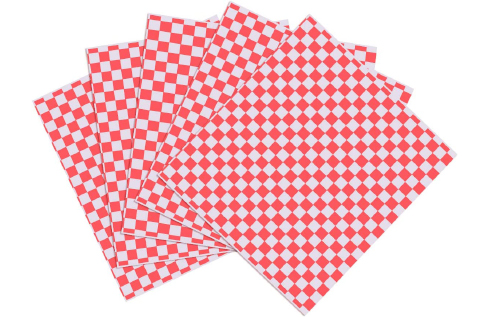
There is a special kind of paper called greaseproof DYYSTORE Paper that is designed to be used in the kitchen. It is made of grease and oil-resistant material, making it excellent for use in the kitchen. The fact that the paper can withstand high temperatures makes it ideal for use in the kitchen.
Because it is available in such a wide variety of hues and patterns, the paper makes it easy to find one that complements the aesthetic of their kitchen. The cost of the paper is also affordable, making it a great option for anyone who is working within a limited financial framework.
4. Glassine Paper
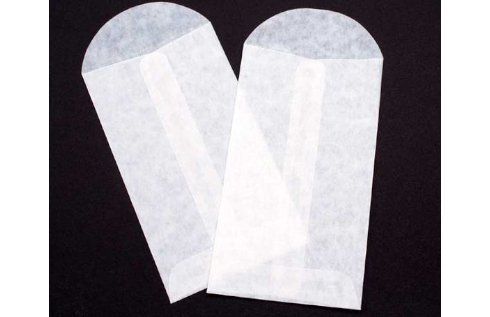
It is a material that can be put to use in a wide variety of different situations. It is protected by a substance called as paraffin and is constructed out of cellulose, which is a naturally occurring polymer. As a direct consequence of this, it is resistant to water and oil.
Glassine paper is see-through and has a velvety texture all over its surface. Due to the fact that, in contrast to other types of paper, it does not lose its color or fall apart with time.
Benefits for Food Packaging
When it comes to the packaging of food, glassine paper offers many benefits. Because this material is resistant to grease, it won’t soak up any oil or grease from the food they put on it. As a consequence of this, it is appropriate for use in the packaging of fatty foods. As a result of its resistance to moisture, glassine paper does not take on the moisture that is present in its surroundings or in food.
As a consequence of this, it is appropriate for use in the packaging of dry goods such as crackers and biscuits. Last but not least, seeing as how glassine paper may be heat-sealed, it can be utilized in the production of hermetic packaging. As a consequence of this, it is an excellent choice for the packing of hot foods like as pizzas and sandwiches.
Applications
Glassine paper is a type of paper that is approved for use with food and is frequently utilized in the food packaging and culinary industries. It is typically waterproofed with wax or grease and is constructed out of chemically treated wood pulp that has been bleached. Wrapping, lining, or coating food using glassine paper is possible because the paper is safe for use with food.
Wrapping, lining, or covering a wide variety of foods with glassine paper are all possible uses for this versatile paper. There are a variety of foods in this category, including meats, cheeses, bread, pastries, and fruits. Glassine paper should be used to line baking pans or trays before they are put into the oven.
Glassine paper is a versatile culinary product that may be used in a number of different applications due to its adaptability. It is safe for food contact and can assist in maintaining the flavor and freshness of the food they have.
Flat Glassine Waxed Paper Treat Bags
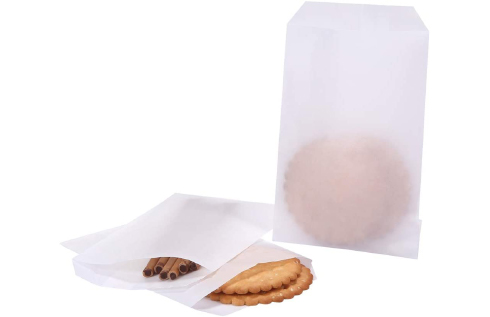
When showing bakeries, sweets, chocolate, cookies, nuts, and other non-food items, flat cello paper bags offer superb visibility for the products being shown. These bags can be used to exhibit delicacies and treats in retail establishments such as restaurants, bakeries, farmers’ markets, and grocery stores.
These paper bags are charming and unique because they allow them to see through the cookies or candies that are contained within them. It works wonderfully as an embellishment for baked goods. Popcorn, candies, chocolate treats, and other appetizers are suitable for any kind of celebration, regardless of the theme.
Glassine paper bags made in Japan that are 100% imported, have a thickness of 1 mm, are odorless, and are safe for the environment (single side) The improved quality of thicker, more resilient bags helps to preserve the freshness of the food and snacks that are contained within them.
5. Vegetable Parchment Paper
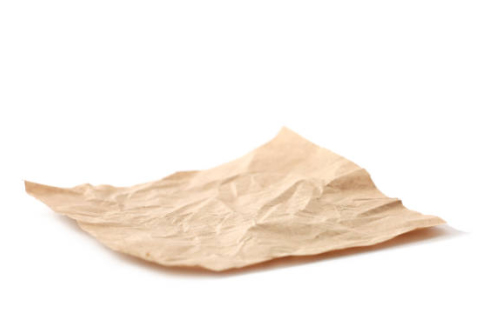
The term “vegetable parchment paper” refers to a specific type of paper that is made from vegetable fibers. This ingredient is frequently utilized in the culinary and baking arts. In the culinary world, they may also hear it referred to as greaseproof paper or parchment paper.
A naturally occurring polymer called cellulose can be found in plants, and this is the material that is used to make vegetable parchment paper. The pulp of vegetables such as cabbage and carrots can be utilized to make this kind of paper.
The production process for vegetable parchment paper is identical to that used to make traditional parchment paper. On the other hand, the paper gets its signature look and feel from the vegetable fibers that were used in its production.
This type of paper has a number of benefits that other types of paper do not have. Food does not adhere to it because it is made of a nonstick material. Because it can withstand high temperatures, they can use it in the microwave or the oven without worrying about damaging it.
Benefits for Food Packaging
A recent study suggests that vegetable parchment paper could be beneficial when it comes to the packaging of food. The experiment conducted by the University of Manchester found that this material has the ability to assist in keeping food fresh and preventing it from going bad.
For the production of vegetable parchment paper, the natural polymer cellulose is utilized. As a consequence of this, it is capable of biodegradation and composting. Additionally, it can be composted. According to the findings of the study, the material has the potential to assist in maintaining the freshness of food for up to three days longer than conventional materials such as plastic wrap.
It is not the first time that the benefits of using vegetable parchment paper as a food packaging alternative have been demonstrated. In 2016, researchers from the University of California conducted a study to see whether or not the material could assist reduce the amount of freezer burn that occurs in frozen foods.
Applications
The nonstick properties of parchment paper are achieved by coating the paper with an oily substance. In addition to being resistant to moisture, the material is versatile and may be used for a wide range of applications in the kitchen.
In the kitchen, parchment paper can be put to a variety of uses, including the lining of baking pans and the packaging of food. It is a versatile substance that may be used in the kitchen for a variety of purposes, including cooking and baking.
Both bleached and unbleached versions of parchment paper are commercially available. Parchment paper that has been bleached is white in color and has undergone a chemical process that renders it nonstick. Unbleached parchment paper is brown in color because it has not been subjected to any kind of chemical processing.
It is possible to use parchment paper for a wide variety of dishes, including baked goods, chicken, fish, and vegetables, among others. It can be purchased in the majority of supermarkets as well as online.
Unbleached Parchment Paper Squares
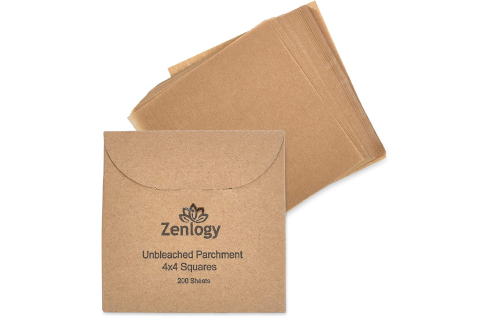
A product that is made of unbleached parchment paper and cut into squares is referred to as an unbleached parchment paper squares product. This device offers a number of benefits, one of which is its versatility, as it may be utilized in both the oven and the microwave.
This product can also be used to line baking pans and cookie sheets, which reduces the amount of food that sticks to the surface and makes cleanup much easier.
Because it prevents freezer burn and helps keep food fresh for longer, this product is particularly well-suited for use in food wrapping. When they are looking for unbleached parchment paper squares, look for a brand that makes sure to use only recycled resources in the production of their product.
6. Waxed Paper Food Packaging
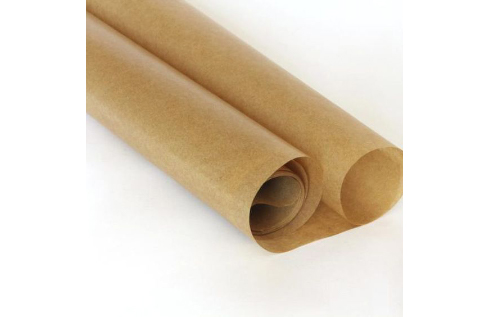
Paper that has been waxed is paper that has been coated with a very thin layer of wax. Because of the wax, the paper becomes more resistant to water and is less likely to tear. In order to prevent food from adhering to a pan or grill, waxed paper is a common item seen in many kitchens. Because the wax contributes to the food staying fresher for a longer period of time, it can also be used to wrap food.
The ability of waxed paper to aid in maintaining the freshness of food is one of the most significant advantages of using this material. Putting a barrier between food and the outside world can be accomplished by using waxed paper to wrap food items like sandwiches or other goods.
This barrier prevents oxygen and moisture from entering the container, which would otherwise cause the food to go bad. The wax also helps to lock in flavors, allowing their food to taste more fresh for a longer period of time than it would without.
Benefits for Food Packaging
Waxed paper is a versatile material that may be used for a range of applications, including the packaging of food. One of these applications is the packaging of food. The waxed paper has a number of useful properties that make it an excellent choice for the packaging of food, including resistance to moisture and the ability to maintain food’s freshness.
Waxed paper is formed by placing a thin layer of wax to the paper. Because of this, the paper benefits from a number of features that make it a good choice for the packaging of food. The layer of wax protects the paper from absorbing moisture from foods like bread and fruits that are placed on top of it. This keeps food fresher for a longer period of time.
The wax coating that surrounds waxed paper makes it resistant to grease as well. Because the fat cannot seep through the paper, it is an excellent choice for wrapping fatty foods such as bacon or sausage, as this prevents the dish from becoming oily.
Applications
Foods of many different kinds can be stored in containers made of waxed paper. Granola, nuts, seeds, and dried fruit are some examples of these types of foods. It is also possible to use it to wrap sandwiches and wraps, in addition to some types of desserts.
The challenge here is to prevent the food from becoming very greasy or watery, both of which have the potential to cause the wax paper to degrade.
Dry Waxed Gusseted Paper Sandwich Bags
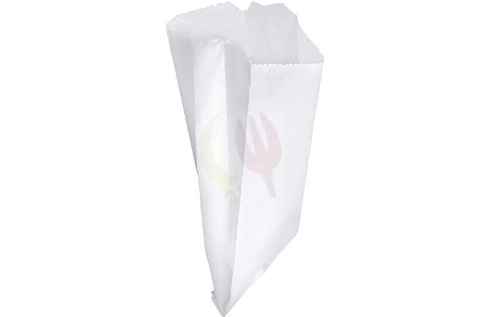
Because they are both safe for the environment and long-lasting, dry waxed gusseted paper bags are a suitable replacement for traditional sandwich bags. Standard paper bags can’t compare to the strength and longevity of these wax-coated bags, which also repel water and are stronger and more durable than regular paper bags.
Another benefit of dry waxed gusseted paper bags is that they are reusable. After each use, simply wipe the bags clean with a dry cloth, and they will look and function just as well as when they were first used. Because they may be recycled, they can continue to make use of them without feeling any sense of obligation.
Plastic sandwich bags can easily be replaced with dry waxed gusseted paper bags, which are a far better option for the environment.
7. Paperboard Food Containers
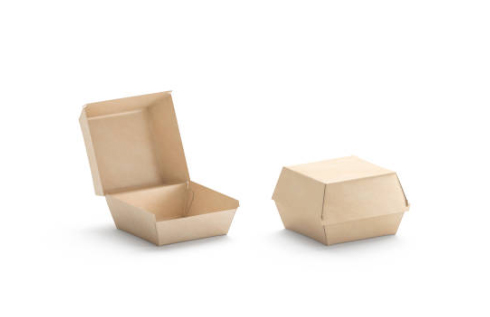
One example of a product that is packaged in a paperboard is a paperboard food container. This material is frequently used for the packaging of many foods, including cereals, crackers, and cookies. Using paperboard food containers rather than other ways of packing has a number of beneficial effects and advantages.
They are not bulky and can be moved around easily due to their low weight. They can also be recycled, which results in less garbage being produced that is harmful to the environment.
This material is also exceptionally long-lasting, which means that it is not prone to tearing or leaking easily. As a consequence of this, it is a perfect choice for the packing of items that must be preserved for extended periods of time in a fresh state.
Paperboard food containers are also relatively affordable to make, making them a decision that is advantageous from a financial perspective for a great number of businesses.
Benefits for Food Packaging
Paperboard food containers offer a number of benefits for the packaging of food, including the ability to maintain the food’s freshness and the facilitation of both transportation and storage. Paperboard is a material that may survive for a long time and is resistant to both moisture and insects, which makes it a good choice for the packaging of food.
Containers made of paperboard are also simple to recycle, which helps reduce the amount of garbage produced, which is beneficial to the environment.
Applications
Paperboard food containers come in a variety of shapes and sizes to accommodate different types of foods. Here are some common paperboard food container applications:
Fruits and vegetables: Fruits and vegetables can be packed in paperboard trays with compartments for each type of produce. These trays protect the produce from bruising and keep it fresh during transport.
Bakery products: Bakery products such as cookies, cakes, and pastries can be packaged in paperboard boxes with clear windows. This allows customers to see the product before purchasing it and keeps the baked goods fresh.
Meat and poultry: Meat and poultry products can be packed in paperboard trays with absorbent pads to soak up any juices. These trays keep the meat fresh during transportation and prevent cross-contamination.
Conclusion
The paper that is utilized in food packing can be of a wide variety of sorts. Some of these sheets include wax, plastic, or aluminum foil coverings so that the food they contain will stay fresh for longer. Some are absorbent, which stops oil and grease from going through them.
Some are able to be composted, while others are biodegradable. Because there is such a wide range of options, it is essential to choose the appropriate kind of paper for the requirements of their food packing.
Yoonpak is a top food packaging manufacturer in China, thus placing an order with them is essential. The next day, they can send out the samples to all of their customers. Find a way to appease them while also advancing the company’s goals.







